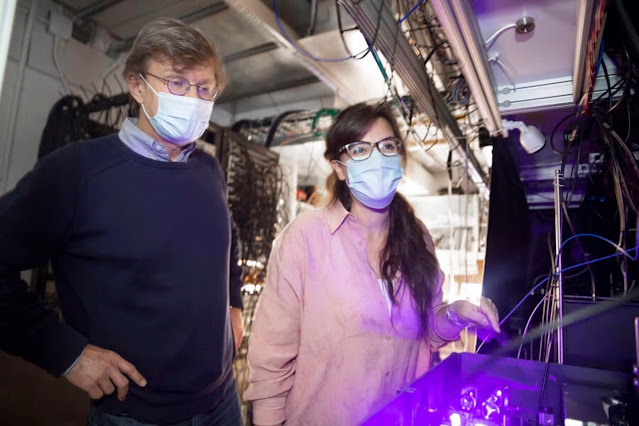For the first time, an unusual condition of matter that was first proposed about 50 years ago has been seen. This substance, known as quantum spin liquid, was developed by Harvard researchers and may someday aid in the advancement of quantum computers.
The electron spins in a material must be well organized for the material to become magnetic. The reason the most prevalent kind of magnetism, the kind you see on your refrigerator, functions is that every electron in the substance spins in the same way. As long as there is order, several kinds of magnetism can develop when nearby electron spins alternate up and down in a checkerboard pattern.
Physicist Philip Anderson, however, postulated a form of matter known as quantum spin liquids in 1973 that defied these regulations. Upon cooling, the substance failed to solidify, and, more significantly, its electrons failed to settle into a state of high order. Rather, they would be in a complex quantum state where they would be entangled with each other and continually trading places.
For the first time, a quantum spin liquid has been produced and observed by a group of scientists led by Harvard. In order to accomplish this, the scientists employed a programmable quantum simulator that they created a few years prior, which uses lasers to hang 219 atoms in a grid. It is possible to carefully control these atoms’ characteristics, including the electron spins.
The atoms were placed in a triangle lattice for this investigation, meaning that each atom has two immediate neighbors. Because of their ability to align or alternate, two electrons can magnetically stabilize one direction; however, the presence of a third wheel upsets this equilibrium and results in an unsteady “frustrated magnet.”
A few interesting quantum phenomena are displayed by the resulting quantum spin liquid, including quantum superposition, which allows atoms to exist in several states simultaneously, and entanglement, which allows atoms to affect one another across great distances and even “teleport” information. Building quantum computers that should be more resistant to outside interference can benefit from both of these.
The study’s primary author, Giulia Semeghini, explains, “We show the very first steps on how to create this topological qubit, but we still need to demonstrate how you can actually encode and manipulate it.” “There’s a lot more to investigate now.”



